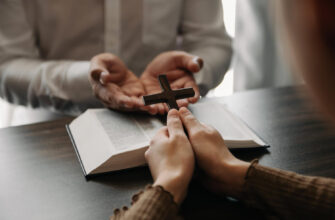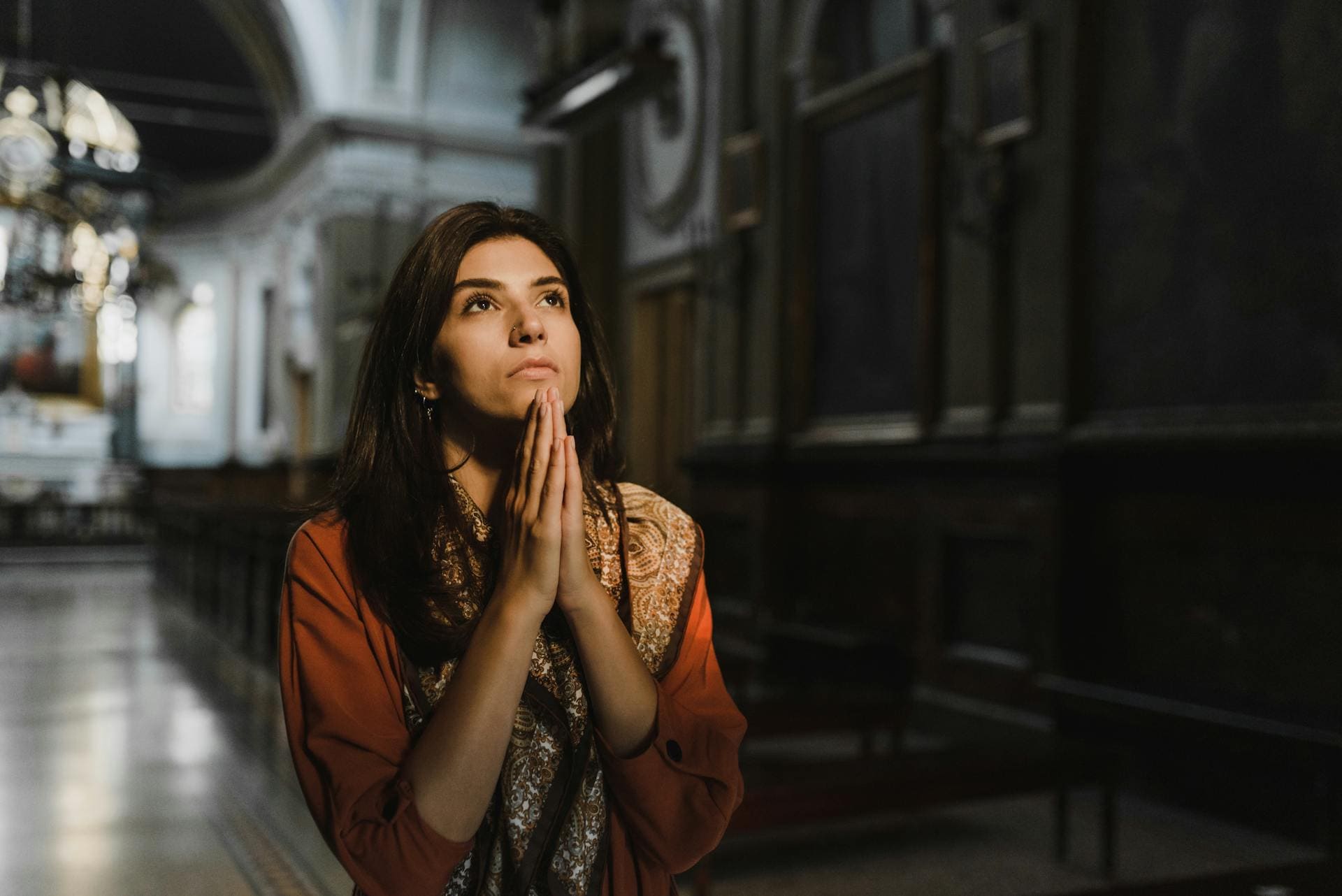Catholicism is one of the oldest and most widespread religions in the world, with over 1.3 billion followers worldwide.
However, despite the common belief that all Catholics share the same beliefs and practices, there are actually many different types of Catholics with varying beliefs and customs.
Understanding the different types of Catholics can be helpful in gaining a deeper understanding of the religion and its followers.
Some of the most common types of Catholics include Roman Catholics, Byzantine Catholics, Maronite Catholics, Coptic Catholics, and English Patrimony Catholics.
Each of these types of Catholics has its own unique customs and traditions, which can vary depending on factors such as geography, culture, and history.
Whether you are a devout Catholic or simply interested in learning more about the religion, this guide will provide a comprehensive overview of the different types of Catholics and their beliefs and practices.
From the history of Catholicism to the differences between various types of Catholics, this guide will provide a wealth of information for anyone interested in learning more about this fascinating religion.
List Of The Different Types Of Catholics
Roman Catholicism
Roman Catholicism is the largest branch of Christianity, with over 1.3 billion members worldwide. It is a hierarchical religion, with the Pope as its leader and the Vatican City as its headquarters.
Roman Catholics believe that the Pope is the successor of Saint Peter, who was appointed by Jesus as the head of the Church. The Pope is considered to be infallible when speaking on matters of faith and morals.
The Roman Catholic Church has a rich history and tradition, with many sacraments, rituals, and practices that are unique to its faith.
For example, Roman Catholics believe in the real presence of Christ in the Eucharist, the sacrament of confession, and the veneration of saints and relics. The Church also places a strong emphasis on social justice and the protection of human life, from conception to natural death.
While Roman Catholicism is the largest branch of Christianity, there are many other types of Catholicism.
For example, there are Eastern Catholic Churches, which are in communion with Rome but have their own distinct liturgies and traditions. There are also Old Catholic Churches, which split from the Roman Catholic Church in the 19th century over issues such as papal infallibility and the doctrine of original sin.
Additionally, there are independent Catholic Churches, which are not in communion with Rome and often have their own unique beliefs and practices.
Eastern Catholicism
Eastern Catholicism refers to the various Catholic Churches that have their roots in the Eastern Christian traditions. While the majority of Catholics around the world are Roman Catholics, Eastern Catholicism is a significant minority within the Catholic Church.
There are 23 Eastern Catholic Churches, each with its own unique liturgical and cultural traditions. These Churches are in full communion with the Pope and the Roman Catholic Church, but they retain their distinct Eastern identity and traditions.
Some of the most well-known Eastern Catholic Churches include the Byzantine Catholic Church, the Maronite Catholic Church, and the Ukrainian Greek Catholic Church.
Each of these Churches has its own liturgical language and customs, which can make them feel quite different from one another.
One of the most significant differences between Eastern Catholicism and Roman Catholicism is the use of different liturgical rites. The Eastern Catholic Churches use one of five different liturgical rites: the Alexandrian Rite, the Armenian Rite, the Byzantine Rite, the East Syriac Rite, and the West Syriac Rite.
Each of these rites has its own unique traditions and practices, which can be quite different from the Roman Rite used in Roman Catholicism.
Despite these differences, Eastern Catholicism shares many of the same beliefs and practices as Roman Catholicism.
Both traditions share the same sacraments, including baptism, confirmation, Eucharist, penance, anointing of the sick, holy orders, and marriage. They also share the same basic beliefs about the nature of God, the Trinity, and the role of the Church in the world.
Anglican Use Catholics
Anglican Use Catholics are a group of Catholics who were formerly Anglican and have converted to Catholicism while retaining some of their Anglican traditions and liturgical practices. This group of Catholics was established in 1980 by Pope John Paul II through the Apostolic Constitution Anglicanorum Coetibus.
This constitution established a structure for Anglicans to enter into full communion with the Catholic Church while preserving their liturgical and spiritual heritage.
Anglican Use Catholics are unique in that they are allowed to use some Anglican liturgical practices and traditions that are not typically found in the Roman Catholic Church.
For example, Anglican Use parishes may use the Book of Common Prayer and other Anglican liturgical texts, as well as certain hymns and prayers that are not typically found in Roman Catholic liturgies.
However, Anglican Use Catholics must also accept the authority of the Pope and the teachings of the Roman Catholic Church.
Anglican Use Catholics are part of the Personal Ordinariate of the Chair of Saint Peter, which is a structure within the Catholic Church that was established to allow former Anglicans to enter into full communion with the Catholic Church while retaining some of their Anglican traditions and practices.
The Personal Ordinariate of the Chair of Saint Peter is based in Houston, Texas, and is led by Bishop Steven J. Lopes.
Traditionalist Catholics
Traditionalist Catholicism is a movement within the Catholic Church that emphasizes the importance of preserving the traditional practices and teachings of the Church before the reforms of the Second Vatican Council in the 1960s.
Traditionalist Catholics have a strong attachment to the Tridentine Mass, also known as the Traditional Latin Mass, which was largely replaced by the Novus Ordo Mass after the Council.
One of the main concerns of Traditionalist Catholics is the perceived liberalization of the Church and a departure from traditional teachings and practices. They often see themselves as defenders of the true Catholic faith and reject many of the changes that have taken place since the Council.
Traditionalist Catholics can be further divided into different groups, each with their own specific beliefs and practices.
Some of these groups include:
- The Society of St. Pius X (SSPX) – a group that was founded in 1970 by Archbishop Marcel Lefebvre in opposition to the reforms of the Council. The SSPX is not in full communion with the Catholic Church, but has a large following of traditionalist Catholics.
- The Priestly Fraternity of St. Peter (FSSP) – a group that was established in 1988 with the permission of Pope John Paul II to provide a home for priests who wanted to celebrate the Traditional Latin Mass.
- The Institute of Christ the King Sovereign Priest (ICKSP) – a society of apostolic life that was founded in 1990 with the goal of promoting the Traditional Latin Mass and other traditional Catholic practices.
Traditionalist Catholics often have a strong devotion to the Blessed Virgin Mary and the saints, and place a great emphasis on the sacraments, especially the Eucharist and Confession.
They also tend to have a more hierarchical view of the Church, with a greater emphasis on the authority of the Pope and the Magisterium.
Liberal Catholics
Liberal Catholics are a significant group within the Catholic Church. According to a Pew Research Center study, approximately 47% of Catholic registered voters identify with or lean toward the Democratic Party, making them politically liberal.
Liberal Catholics are characterized by their openness to change and their willingness to challenge traditional Catholic teachings. They often advocate for social justice issues such as immigration reform, LGBTQ+ rights, and women’s rights.
In terms of religious practices, liberal Catholics may be more likely to attend Mass less frequently than other Catholics, but they still consider themselves to be devout followers of the faith. They may also be more likely to interpret Catholic teachings in a more flexible and inclusive manner.
It is important to note that while liberal Catholics may differ from more traditional Catholics in their beliefs and practices, they still consider themselves to be part of the Catholic Church. They may see their progressive views as a way to help the Church evolve and remain relevant in a changing world.
Overall, liberal Catholics are an important part of the Catholic community, bringing a unique perspective and a commitment to social justice issues.
Charismatic Catholics
Charismatic Catholicism is a movement within the Catholic Church that emphasizes the role of the Holy Spirit in the daily lives of its followers.
For Catholic charismatics, the central experience is “the baptism of the Holy Spirit.” The baptism of the Holy Spirit differs from the traditional Catholic infant baptism with water.
Adults who have already been baptized receive this baptism, which is seen as a personal encounter with Jesus Christ that empowers them to live a more vibrant Christian life. Charismatic Catholics believe in the gifts of the Holy Spirit, such as speaking in tongues, healing, and prophecy.
They also place a strong emphasis on personal prayer and worship, often incorporating lively music and dance into their services. The Catholic Church recognizes the Charismatic Renewal as a valid expression of Catholic faith and encourages its members to participate.
One of the distinctive features of charismatic Catholicism is the use of glossolalia, or speaking in tongues, during prayer and worship. Glossolalia involves speaking in a language that is unknown to the speaker, but is believed to be a form of communication with God.
While some Catholics view this practice with skepticism, others see it as a legitimate form of spiritual expression. Charismatic Catholicism has been criticized by some for its emphasis on emotionalism and individual experience over traditional Catholic practices and teachings.
However, supporters of the movement argue that it provides a way for Catholics to experience a deeper relationship with God and a more vibrant faith.
Overall, charismatic Catholicism is a growing movement within the Catholic Church that emphasizes the role of the Holy Spirit in the daily lives of its followers. While it may not be for everyone, it provides a unique and vibrant expression of Catholic faith.
Conclusion
As the largest Christian denomination in the world, Catholicism has a diverse set of beliefs and practices that vary across different regions and communities.
While there are many different types of Catholics, they all share a common faith in the teachings of Jesus Christ and the authority of the Pope.
Regardless of their specific traditions or practices, Catholics around the world are united by their commitment to social justice, charity, and service to others.
Whether they are members of the Latin Rite, Eastern Rite, or one of the many other Catholic communities, they all strive to live out the values of their faith in their daily lives.
While there may be differences between the various types of Catholics, it is important to remember that they are all part of the same global community.
By embracing diversity and working together to promote the common good, Catholics can continue to make a positive impact on the world and uphold the values of their faith for generations to come.







